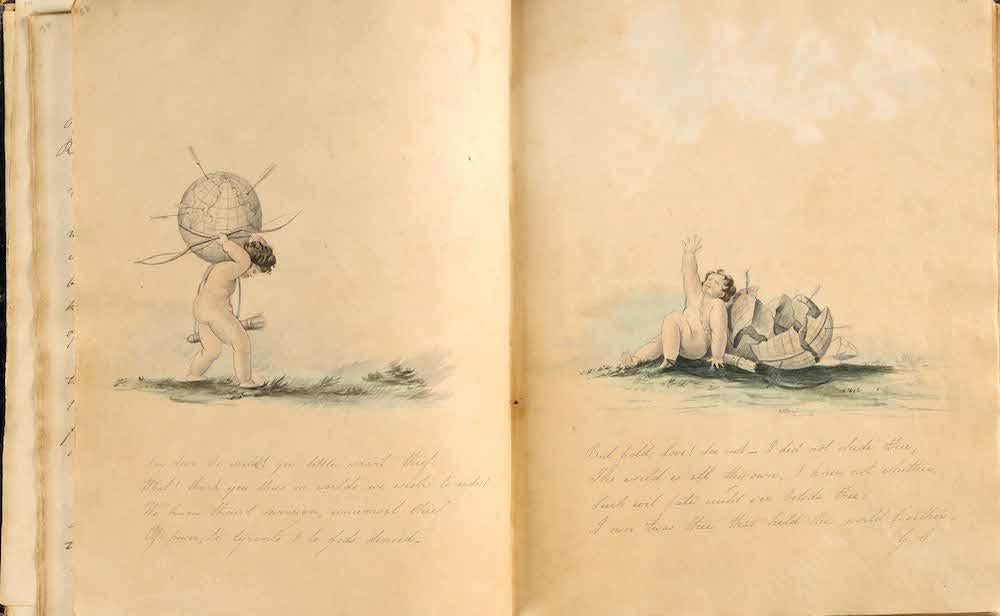Friendship albums became popular in America in the 1820s, as the blossoming culture of sentimentalism made its mark on personal relationships, especially those of young people. Bookmakers created sturdy, thick, leather-bound books expressly for friends to leave emotional tributes. This album was a gift to Mary Wallace Peck, a former student and then drawing teacher at the Litchfield Female Academy in Connecticut, from her fiancé Edward Mansfield in 1825.
Young women, particularly those finishing their time at a female academy and preparing to leave their school friends, tended to be the ones to create friendship albums. Their friends often included men; in fact, men made up just over half of the signers who could be identified in Mary’s album. This was an unusually high ratio, and her album is unique in other ways: It has the signatures of several prominent people, including George Catlin and Catharine Beecher, and it has a large amount of hair. While friends occasionally contributed small locks of hair to albums, the locks in Mary’s album are primarily decorative tributes to deceased friends. In the early 19th century, the death of a friend was a familiar experience, even to young men and women, and albums helped preserve memories.
Friends usually left their mark in an album with a poem or, less often, a drawing. Generally these were not original poems or drawings but pieces copied from books or magazines. The poems were usually about friendship, religion, or womanhood, and many referenced separation of friends or even death. It could be hard to choose the proper tribute; one writer at the time wryly defined the album as “an instrument of torture invented by some cruel fair one to rack the brains of her male acquaintance.”
Mary’s album is owned by the Litchfield Historical Society. The site of the nation’s first law school as well as a pioneering school for girls, Litchfield was home to a community of young men and women from around the country who went on to prominent positions in American politics, literature, art, and education. With alumni like Harriet Beecher Stowe and John Calhoun, Litchfield was central to the development of American identity in the 19th century.
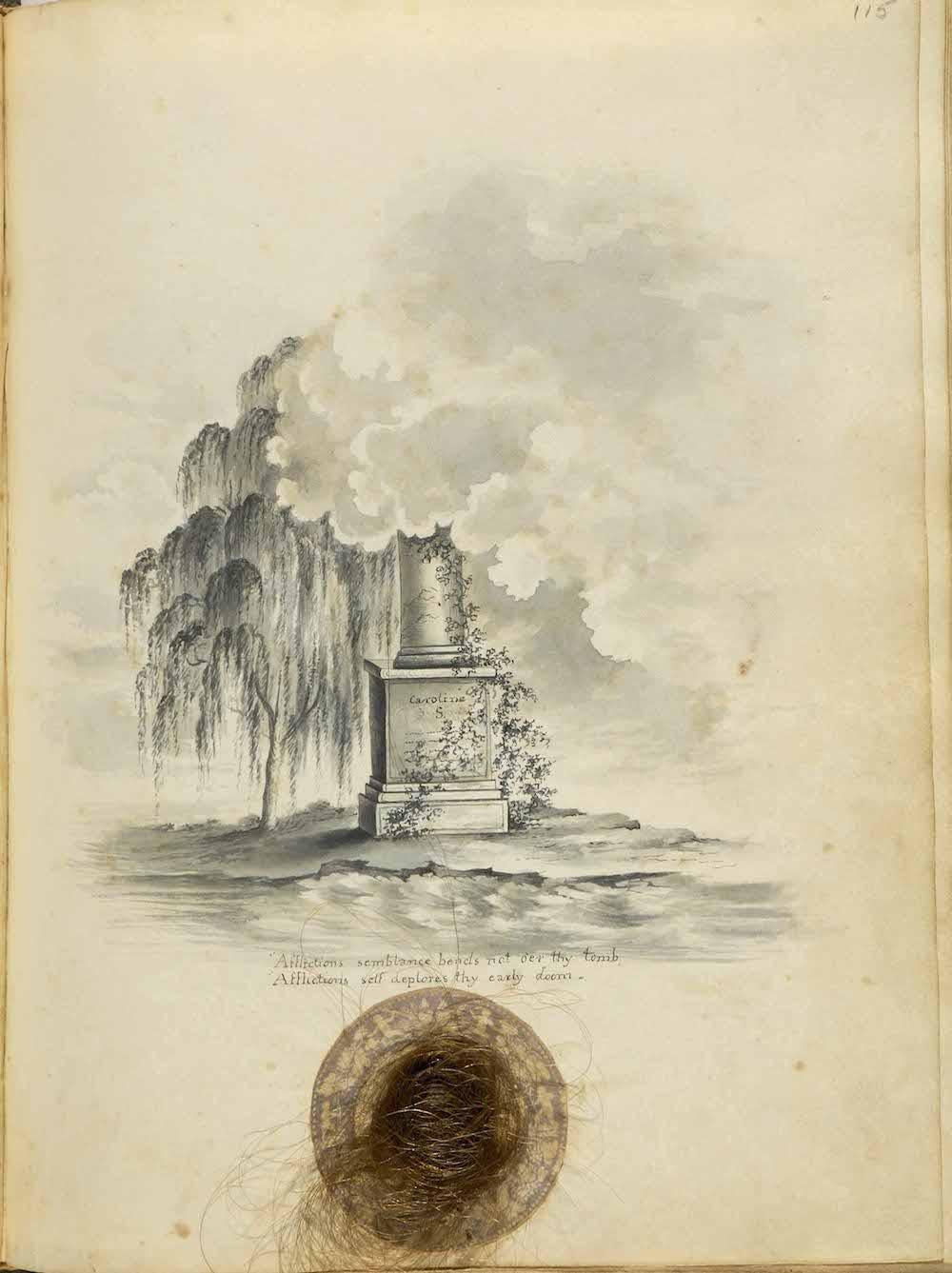
Litchfield Historical Society
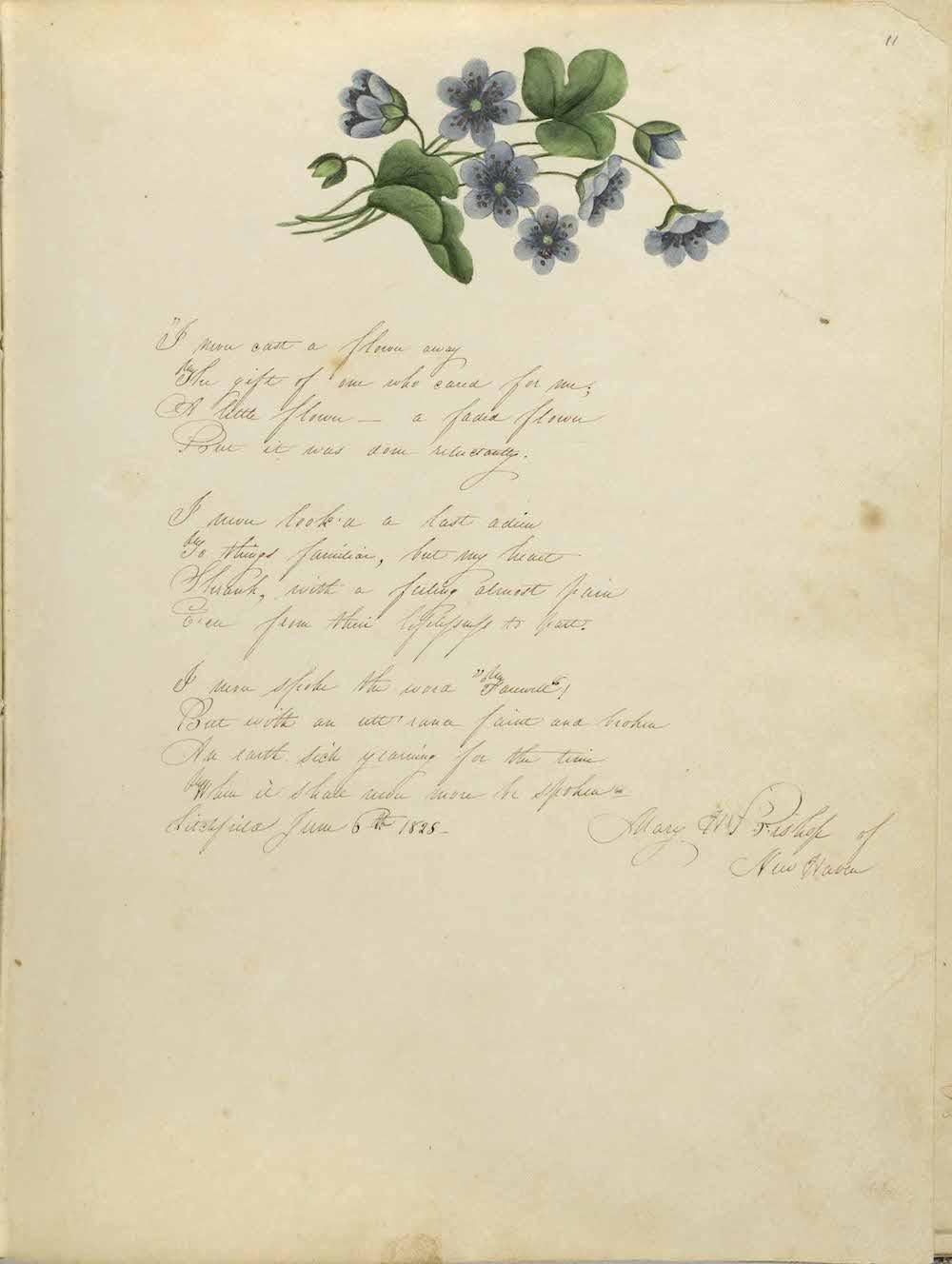
Litchfield Historical Society
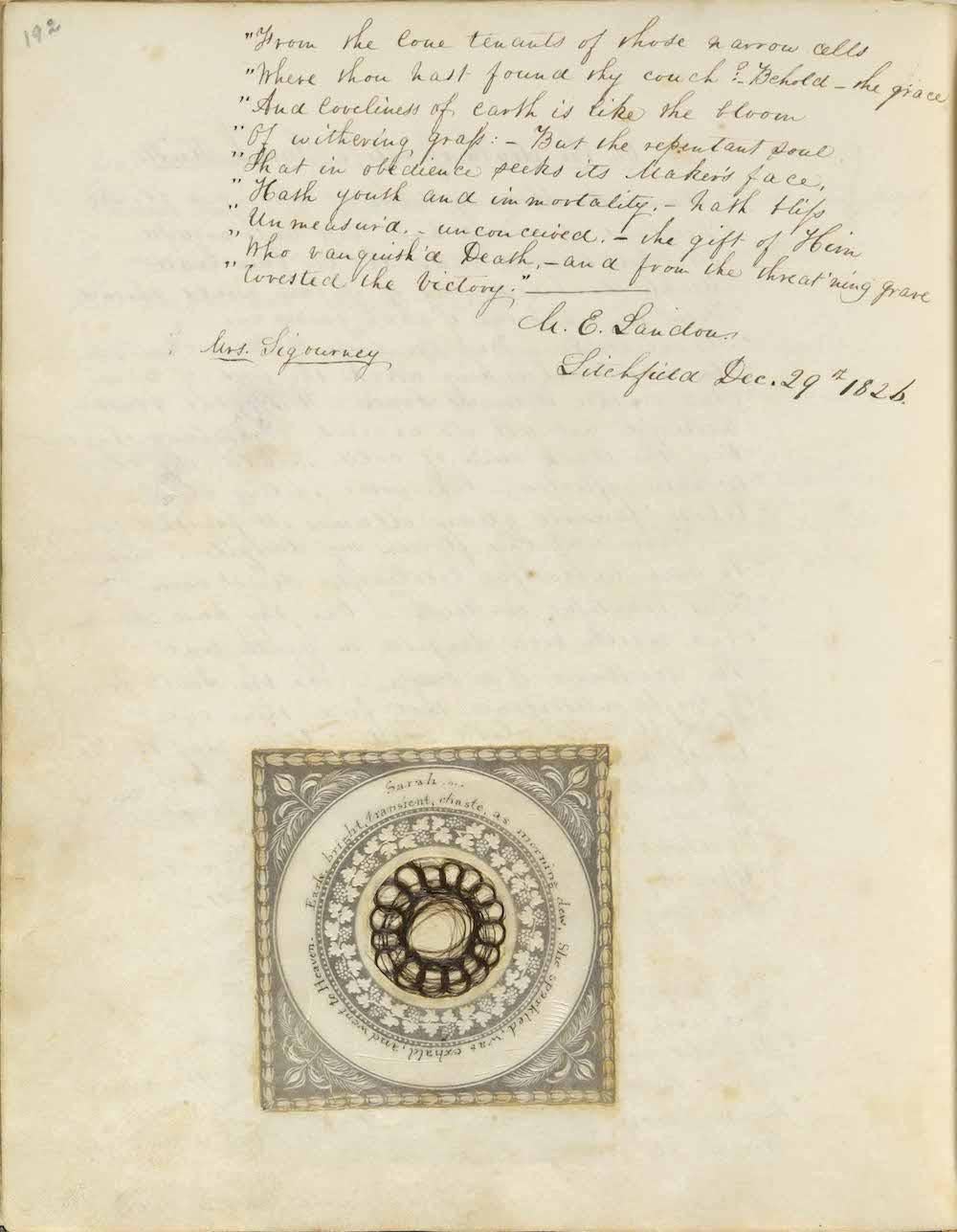
Litchfield Historical Society
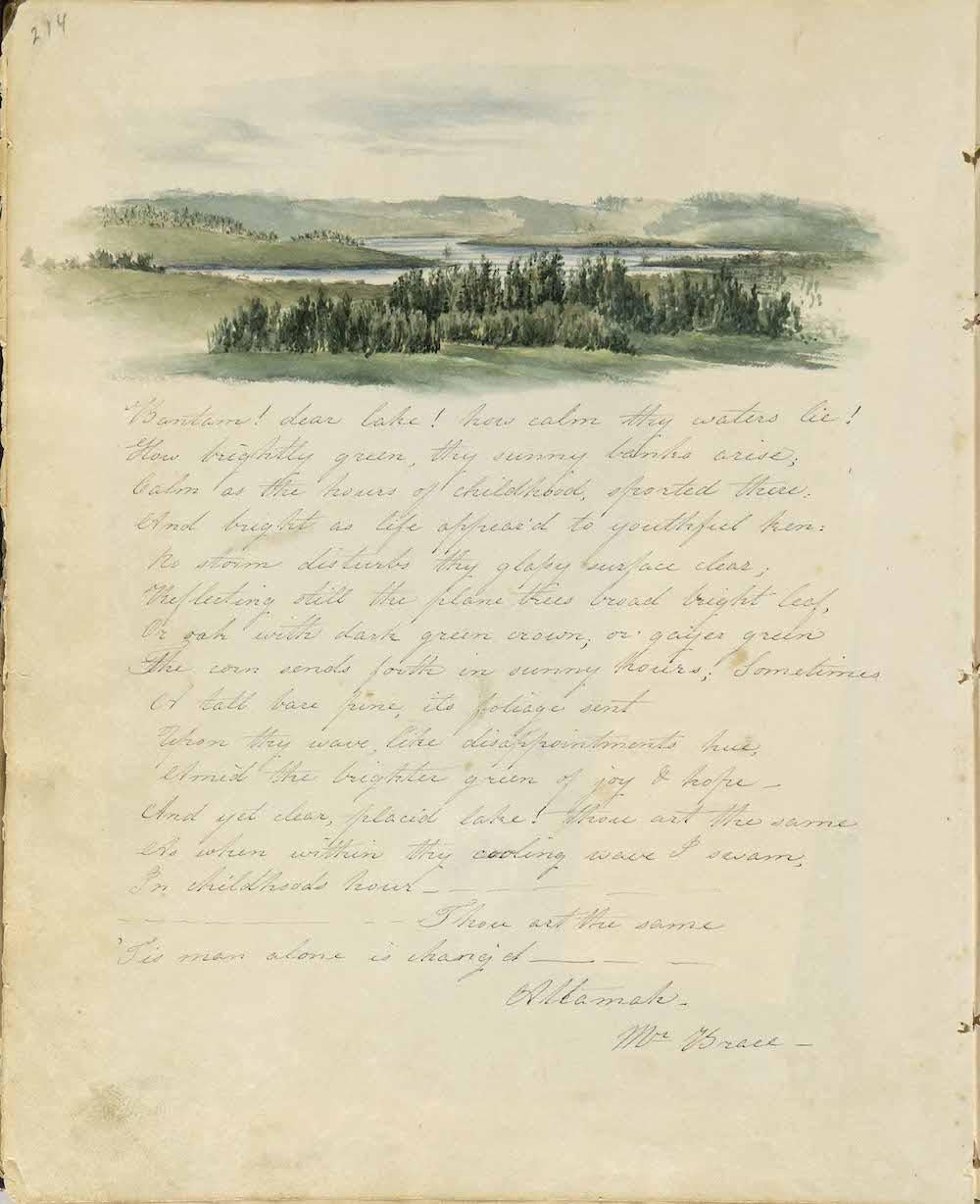
Litchfield Historical Society
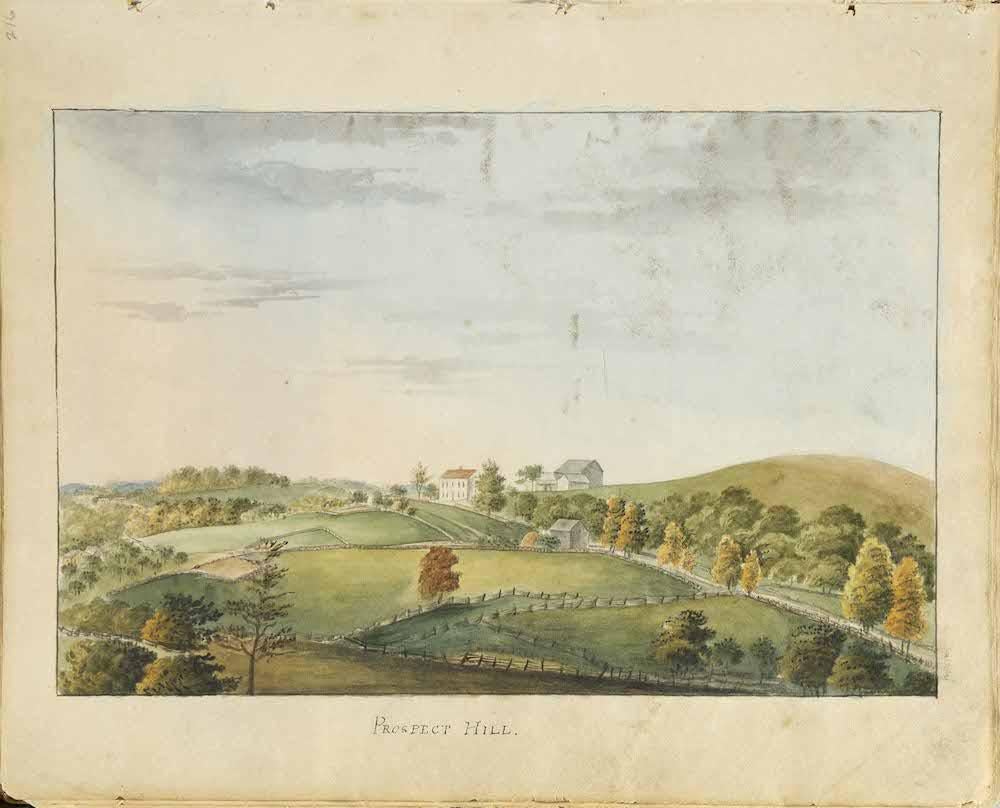
Litchfield Historical Society
